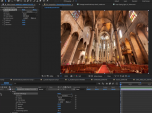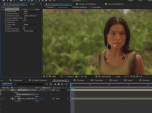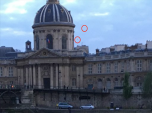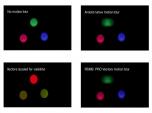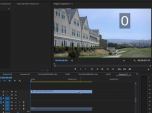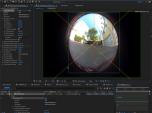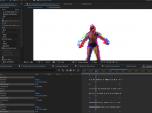Find a Tutorial
-
More than one way to blend - RE:Grade HDR Merge Part 2
See TutorialDescription
In this tutorial, you will see examples which show more creative uses for RE:Grade HDR Merge. In the first tutorial (Part 1) you see more basic usage.In this tutorial, you will see examples which show more creative uses for RE:Grade HDR Merge. In the first tutorial (Part 1) you see more basic usage.This Tutorial Includes
- Video
-
More than one way to blend - RE:Grade HDR Merge - Part 1
See TutorialDescription
In this tutorial, you will see an intro with five examples of different uses for HDR Merge.In this tutorial, you will see an intro with five examples of different uses for HDR Merge.
This Tutorial Includes
- Video
-
RE:Fill for Better Composites
See TutorialDescription
In this tutorial, you will see how to use RE:Fill Area Fill, Grow/Shrink, Choke and RE:Fill Alpha to create a better composite. You will see examples of how these RE:Fill plugins work together to give you better results.In this tutorial, you will see how to use RE:Fill Area Fill, Grow/Shrink, Choke and RE:Fill Alpha to create a better composite. You will see examples of how these RE:Fill plugins work together to give you better results.
Music: YouTube Audio Library
This Tutorial Includes
- Video
-
Dead pixel, Hot pixel, Stuck pixel removal with RE:Fill
See TutorialDescription
In this tutorial, you will see how to use RE:Fill Area Fill to get rid of Dead, Hot or Stuck pixels. This is just one use for RE:Fill Area Fill. You can check our documentation and other tutorials for other uses.In this tutorial, you will see how to use RE:Fill Area Fill to get rid of Dead, Hot or Stuck pixels. This is just one use for RE:Fill Area Fill. You can check our documentation and other tutorials for other uses.This Tutorial Includes
- Video
-
RE:Grade and Timelapse
See TutorialDescription
In this tutorial, you will see a few examples showing different methods of using REGrade to color correct a Time-lapse shot.
Description:In this tutorial, you will see a few examples showing different methods of using REGrade to color correct a Time-lapse shot.Timestamps:00:36 See steps to fixed washed out timelapse footage00:41 Adding RE:Grade Contrast00:56 Fine tuning and adjusting parameters in RE:Grade ContrastMusic: YouTube Audio Library (Virtual Light - Houses of Heaven)Author: Lori FreitagCompany: RE:Vision Effectslink: http://revisionfx.com/products/REGrade/In this tutorial, you will see a few examples showing different methods of using REGrade to color correct a Time-lapse shot.Music: YouTube Audio Library (Virtual Light - Houses of Heaven)This Tutorial Includes
- Video
-
MV out of Maya with Arnold
See TutorialDescription
Maya now ships with Arnold as renderer. This tutorial reviews the motion vector shader they made to support our products.
This Tutorial Includes
- Web Pages
-
How to make a perfect stabilization VR 360 Hyperlapse video
See TutorialDescription
Andrii Shramko demos a useful feature in RE:Lens spherical stabilizer allowing you to handle real hard shots by masking areas of the source. You can also use this feature on fisheye stabilization where there is moving junk (light flares and leaks) outside of the image circle that affects the tracking, as well as in stitched videos where a camera is moving indepedently from the rest of the rig (which confuses any tracker).
https://www.facebook.com/shramko360/This Tutorial Includes
- Video
-
Premiere Pro to After Effects Workflow
See TutorialDescription
In this tutorial, we will see three examples showing the workflow from Premiere Pro to After Effects using Dynamic link. Examples include use of Twixtor, RE:Match and RE:Lens plugins.In this tutorial, we will see three examples showing the workflow from Premiere Pro to After Effects using Dynamic link. Examples include use of Twixtor, RE:Match and RE:Lens plugins.
This Tutorial Includes
- Video
-
RE:Lens - Shoot now, do the camera work later
See TutorialDescription
In this tutorial, we will use the RE:Lens Superfish plugin, to animate the camera in post and show two examples.camera used: Modified GoPro camera with the Entanyia fisheye lens by EntapanoIn this tutorial, we will use the RE:Lens Superfish and the From Latlong plugin, to animate the camera in post and show two examples.
camera used: Modified GoPro camera with the Entanyia fisheye lens by EntapanoThis Tutorial Includes
- Video
-
RE:Flex for AE - Moving Morph using per-spline blending and warping controls
See TutorialDescription
This screencast takes the Moving Morph a step further, explaining how to vary the splines dissolve rates and also how to use the Control Image to fine tune your results.Special Thanks to credit Amy Seiwert's Imagery ( http://www.asimagery.org ) for providing footage for this tutorial.This screencast takes the Moving Morph a step further, explaining how to vary the splines dissolve rates and also how to use the Control Image to fine tune your results.
Special Thanks to credit Amy Seiwert's Imagery ( http://www.asimagery.org ) for providing footage for this tutorial.This Tutorial Includes
- Video

 All Products
All Products Autograph
Autograph Color Genius
Color Genius DE:Noise
DE:Noise DEFlicker
DEFlicker Effections
Effections FieldsKit
FieldsKit PV Feather
PV Feather RE:Fill
RE:Fill RE:Flex
RE:Flex RE:Grade
RE:Grade RE:Lens
RE:Lens RE:Map
RE:Map RE:Match
RE:Match REZup
REZup RSMB
RSMB Shade/Shape
Shade/Shape SmoothKit
SmoothKit Twixtor
Twixtor Video Gogh
Video Gogh After Effects
After Effects



















